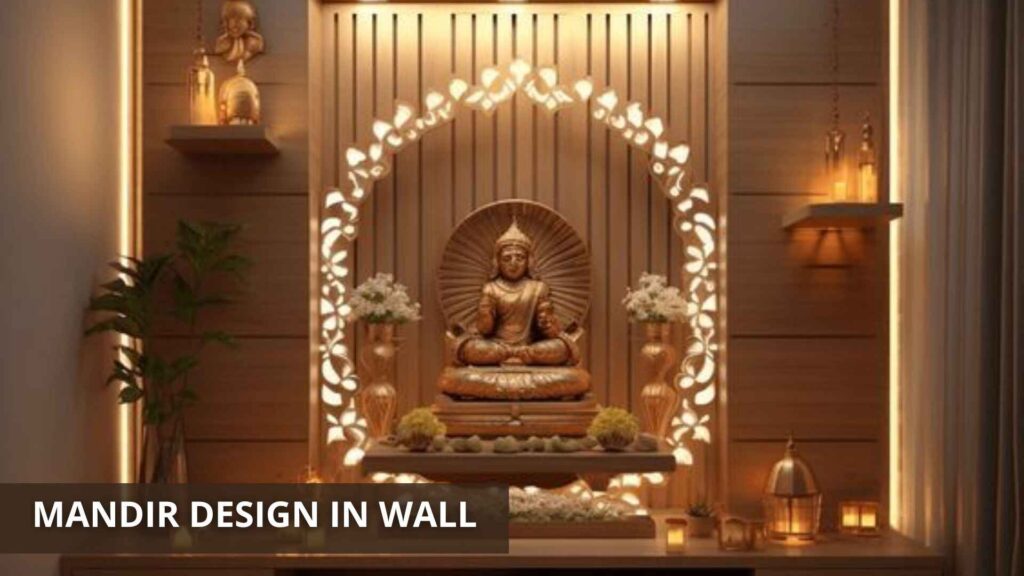20 Latest Mandir Design in Wall Ideas in 2024

About Future Stiles Future Stiles is a relatively new player in the tile industry, but it has quickly gained recognition for its innovative and modern designs. The brand focuses on merging cutting-edge technology with artistic craftsmanship to create unique and visually appealing tiles. Facebook Twitter Instagram Linkedin Latest Post 20 Latest Mandir Design in Wall Ideas in 2024 Equally, the mandir, or home temple, is of particular significance in India. It is a place of worship where families come together, perform prayers, and meditate. In the current day and age, architectural designs have become considerate enough to incorporate mandirs in a bid to include spirituality in daily routines. “Mandir design in the wall of the house/modern house” has become one of the intricating design features of the modern house enabling the owners to reserve some spots for prayers without messing up with the elegance or beauty of the house. Be it a small apartment or a big villa, designs of wall mounted mandir looks stylish and are practical and respectful of religious needs. 1. The Significance of a Mandir in the Home Before discussing the actual design elements, it is important to highlight the nature of the mandir from a cultural and spiritual perspective. In Indian homes, the mandir is usually a dedicated place for the daily pooja where devotees conduct rituals, and prayers and make offerings to the divine. It is termed the center of the house implying direct access to divine power. The location, orientation, and form of the mandir are of great impact in sustaining the spiritual energy of the area. Optimally designed wall niches for Mandir suit the modern style of dwelling design and interior decoration guaranteeing the sanctity of the room. Download Catalogue 2. Choosing the Right Wall for Your Mandir It’s essential to note that when constructing a wall-mounted mandir, choosing the right wall is very important. Known as Vastu Shastra, an Indian architectural discipline, places a mandir in the northeast corner of the house which is the most favorable position. Such space, called Ishan Kona, is said to be a source of positive energy and one where an individual can cultivate spirituality. In the case of a wall-mounted mandir, the east or north walls are also recommended if the northeast is not accessible. Space is not the only issue, however, consider the position of the mandir to the daily routines. It must be situated in a quiet and calm part of the house away from busy areas such as the living room or kitchen. Constructing a mini mandir within a hallway at the foyer or in the corner of a bedroom is best as it allows for a peaceful area for prayer. 3. Wall-Mounted Mandir Design Ideas Mandir design in wall spaces presents designers with unusual and practical opportunities. There is no limit to imagination, it is possible as well both to create nowadays uncluttered style and to decorate in the traditional complicated manner. Here are a few fun design options for your wall-mounted mandir: a) Traditional Carved Wooden Mandir The mandirs made of wood with such showerla designs are preferred and are splendid even today. Wherever, whether it be a teak or rosewood or mango wood These mandirs are a perfect combination of beauty and warmth as they are ancient determined. Most of the carvings would include idols, flowers, or Indian designs, which are indeed erect a cultural aspect of the site. A wooden inset affixed to a wall that holds an idol and has a raised shelf or is on photo is an innovative traditional feature that combines so well with the contemporary décor. The mandir can be further adorned using brass bells, diyas and traditional drapes in such a way that the beauty doesn’t clash with the functionality of the items. b) Minimalist Mandir with Floating Shelves For the more crowded apartments or those who are minimalist in decor, then the use of a sleek mandir design using floating shelves is quite attractive. With the use of floating shelves, it is possible to reserve a vertical space for the deities without the need to place elaborate wall treatment. Go for straight lines, plain lighting and soft colors for modern look. Walls can be a clean and polished aspect with the use of white marble, stone, or wood as the floating shelves. There is also the option of placing a small prayer stool or cushion beneath the lighter fixations for ease of use during prayers. With this design, the mandir gets incorporated into the overall interior of the house while still serving the purpose of a placid space for puja. c) Marble Mandir for Luxurious Elegance The quality of marble as a material is such that it is often linked with purity and godliness, hence it is suitable to be used in making an elaborate wall-mounted mandir. A white or back ivory white mausoleum of cheap material that has but slight carving of details will still beautify this area without compromising the sanctity of the place. Such a mandir design can also consist of shelves made of marble, a back wall made of marble with beautiful jaali work, or just a very simple marble partition for provision for idol placements. The addition of a soft LED backlight to the marble hinges can further add to the temples sophistication making a serene lighted ambience for prayer. d) Jaali Patterned Mandir for a Contemporary Twist Jaali patterns are decorative perforations, which are also called latticework and are generally present in Indian architecture. They give beauty as well as serenity to the modern wall mounted mandir. You can carve out this space in the wall and cover it with decorative jaali work done in wood, metal or stone. Such designs enhance the beauty of the mandir and most importantly, allow light and air to permeate into the mandir. Jaali designs can work in both space, whether traditional or modern, but it doesn’t just end there as it also adds cultural elements against modernity.
